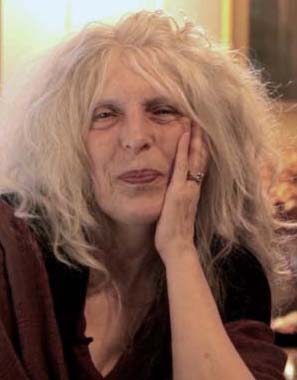Imagine a medical student lingering outside the door of the anatomy lab, half eager to enter and yet half afraid. When she opens the door, the student will enter a place Danielle Ofri, MD, calls "Stuffy, smelly, drippy, disgusting" in her introduction to this beautifully conceived and presented volume entitled Art & Anatomy: Drawings by editors Laura Ferguson and Katie Grogan, published in 2017 by the University of California Medical Humanities Press.The student might wonder how she will ever survive learning to dissect the human body; how learn to balance the clinical and the humane; how to embrace the technical necessities while maintaining the creative passion that called her to medicine in the first place.
Laura Ferguson, Artist in Residence at New York University's School of Medicine's Master Scholars Program. Photo by Emon Hassan
Since 2009, Laura Ferguson, Artist in Residence at New York University's School of Medicine's Master Scholars Program, has been providing an answer to these questions, for medical students as well as for residents, physicians, nurses, and other medical personnel. On Tuesday evenings, Ferguson transforms the anatomy lab into an artist's studio, where she guides and encourages students as they study, and then draw, the beautiful bits and pieces of the human body.
The purpose of her Art & Anatomy seminar, Ferguson writes, is not for students to create perfect art but rather "to experiment, to take risks" (page 134). Here there is no right or wrong, only the opportunity to look deeply and experience the human body artistically.
The drawings in this book are intimate, sensual, and astoundingly gorgeous, presented in an order that reflects the eight sessions of the course. In session one, students each select a bone from the "bone box." Ferguson names the bones, shows where they articulate in the human skeleton, then invites students to study and draw their chosen bones, the whorls and dips. As they draw―vertebrae and spinal column, the drama of sacrum and pelvis, ribs, femur, the tiny bones of the foot―students learn forms that fascinate rather than facts to memorize.
Editor Katie Grogan. Photo by Jeff Weiner
Ferguson also asks students to draw the bones of their own hands, to imagine bone linked to muscle and tendon, and perhaps to ponder how their anatomy is like or unlike that of their patients. Hannah Bernstein, on page 60, draws her left hand from without and within, including a scar that ladders down from the base of her thumb. Amy Ou draws her hand holding the hand bones of a skeleton (page 67), surely a way to connect her own living flesh with the reality of patient mortality she will encounter during her medical practice.
Storytelling is encouraged. Jing Ye draws the pelvis with a fibula and radius intersecting, naming this "The Fiddler" (page 43). Shian Liu, titles the ribcage, drawn in strong strokes, "Ribcage, of Breath and Bone" (page 35). Karen Ong draws a cadaver in its protective bag, naming it, "Under My Skin" (page 106). Such storytelling encourages students to visualize the lives of their patients and to examine their own emotional responses to these imagined lives.
In another session, students draw from life models, a chance to see the body both in motion and repose and so picture the movement of bone and muscle under skin. Students also draw from cadavers, an artistic and emotional challenge. Encouraged to observe in groups, students focus on details―not an easy task when faced with the lovely complexities of the opened body. In later sessions, students become even more intimately involved with the cadavers, removing individual organs to visualize their precise locations in the body and to observe the natural variations in human anatomy. Studying the organs they removed, students discover beauty in kidney, lung, heart, or brain. Some choose to draw the faces of their cadavers. Yohei Rosen's becomes a study in the planes and angles of the face (page 108); Michael Malone's "Bisected Head" is titled "Abandon" (page 115).
In the final session, students put finishing touches on their drawings and select which to scan and save. Many of these drawings have found a home here, in this fascinating and moving book. As Ferguson's students surely must leave her Art & Anatomy drawing class changed and inspired, so too readers will be intrigued and humbled by these accomplished and deeply reverent drawings.—Cortney Davis
See a video about Laura Ferguson’s work on Narratively
Cortney Davis
Cortney Davis, a Nurse Practitioner, is the author of Taking Care of Time, winner of the Wheelbarrow Poetry Prize (Michigan State University Press, 2018). Her other poetry collections include Leopold’s Maneuvers, winner of the Prairie Schooner Poetry Prize, and Details of Flesh (Calyx Books). Her non-fiction publications include When the Nurse Becomes a Patient: A Story in Words and Images and The Heart’s Truth: Essays on the Art of Nursing. Davis is co-editor of Learning To Heal: Reflections on Nursing School in Poetry and Prose (Kent State University Press 2018). She has received an NEA Poetry Fellowship, three CT Commission on the Arts Poetry Grants, and is an annotator for the NYU Literature and Medicine Database. “Entering the Sick Room” and “It Was The Second Patient of The Day” (Poetry) www.cortneydavis.com @nurseprofile




